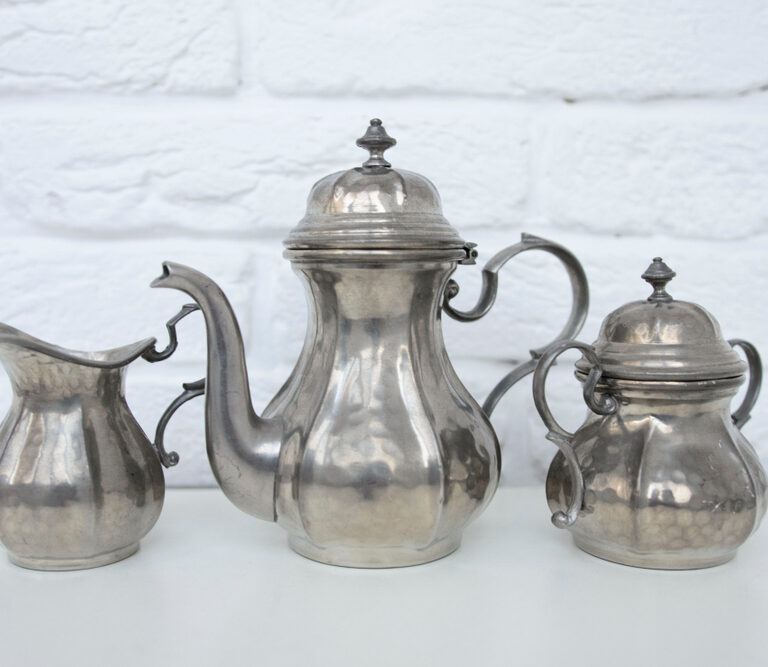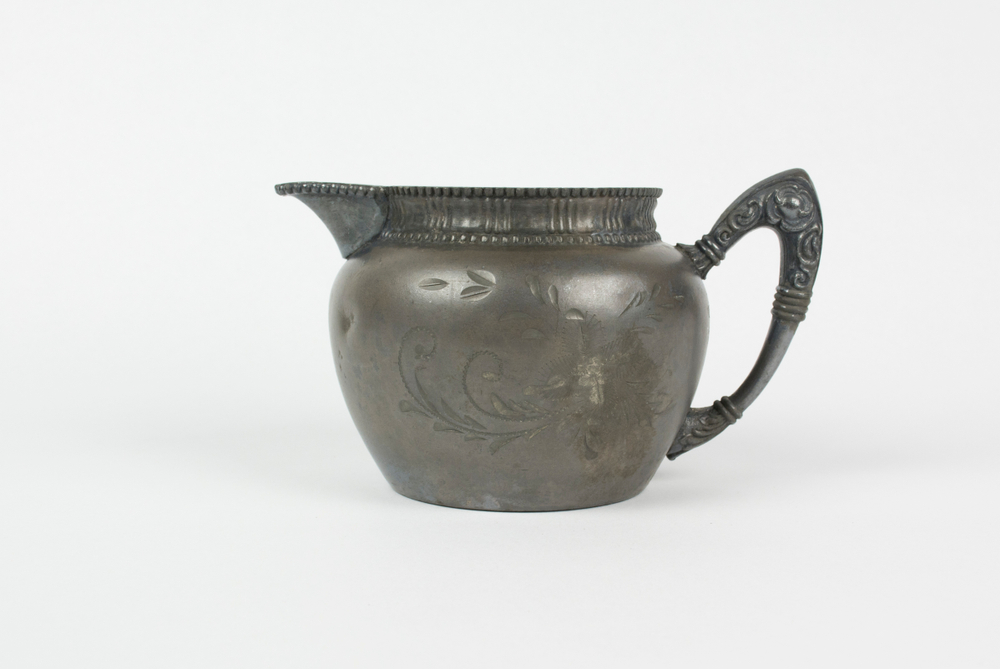Pewter is a well-loved metal that has a lot of history. It dates back to several thousand years ago when the Romans started using it on important devices, like their official seals.
Today, this tin-based alloy is used for a wide variety of things, such as art pieces, tableware, decorative ornaments, and sometimes even jewelry. Not only does it not tarnish, but it also keeps its sheen for a long time. Many people love it for its unique dark, colored patina–the layer of film that develops on the surface of metals after oxidation–that gives it a characteristic warm glow and adds to its appeal.
But lovely as pewter is, you do have to be quite careful when cleaning it, especially if you want your item to preserve its sheen and characteristic patina for a long time.
Methods for Cleaning Pewter
There are several ways to clean pewter, depending on different situations and different pewter polishes, which we’ll discuss further below. If you’re planning on keeping a beautiful pewter piece for yourself, it’s beneficial for you to learn all of them.
In this section, we’ll discuss how to clean pewter using three methods.
Method 1: Soap and Water
Given how delicate that lovely patina is on pewter items, it’s perfectly reasonable to wash them only with mild solutions, like soap and water.
What You Need
- Duster or microfiber cloth
- Hot water
- Mild dishwashing soap
- Sponge
- Clean, dry towels
Steps
- Before washing your pewter items, use a duster to wipe the metal first. The cleaner the metal, the less washing and polishing it will need.
- Fill a container with hot water. Lukewarm water is fine, but hot water will remove the dirt and grime much easier.
- Add mild liquid detergent to the water. You can also use baby shampoo, another gentle cleaning agent. You can’t pick anything too strong as it might damage the pewter’s patina.
- Hand-wash your pewter item, rubbing its surface gently. You can also use a sponge or soft cloth to clean it better. Never use abrasives like sandpaper or stiff-bristled scrubs because they can cause scratches easily.
- Rinse the item thoroughly to remove excess soap and grime, as even invisible particles can damage the surface over time.
- Use clean towels to dry your pewter pieces, making sure that they’re completely dry before you store them.
Method 2: Vinegar and Flour Mixture
Vinegar has a reputation for being an all-around home cleaner. Used anywhere from removing odors to cleaning the bathroom, vinegar is well-established as a gentle-but-effective cleaning agent.
A word of warning before we continue – this method should never be done on oxidized pewter. Also, you should only do this once a year on polished and satin pewter. The abrasive nature of the paste could damage the pewter surface if applied too frequently to non-oxidized pewter, and if applied to oxidized pewter.
What You Need
- Vinegar
- Flour
- Container
- Steel wool
- Clean towels
Steps
- In a large container, mix a cup of white vinegar with half a cup of flour. Stir the mixture until it forms a uniform paste that is mildly abrasive and perfect for deep-cleaning non-oxidized pewter surfaces.
- If you’re cleaning satin pewter, add salt to the paste. Salt will provide a bit more natural abrasiveness to your paste, which is just what the textured, sensitive surface of satin pewter needs.
- Apply the mixture to the metal surface with a clean, soft cloth. Rub in gentle, circular motions all over the surface, and then let it sit for 20-30 minutes. Don’t rub too firmly or too fast as this could damage the pewter’s surface.
- If you’re cleaning satin pewter, this is the time to use fine steel wool to brush the surface, following the direction of the grain. Again, use extreme caution, or else your item will get scratched.
- Wash the pewter surface with warm water. Completely wipe away the paste by putting the piece under running water or carefully wiping it with a wet, soft cloth. Just like with the previous method, make sure that no cleaning paste is left in this step.
- Use a clean cloth to completely dry the pewter before you store it.
Method 3: Linseed Oil
Linseed oil comes from the same flax plant as flaxseed oil, but the main difference between these two kinds of oil is that flaxseed is suited for human consumption while linseed oil is used for industrial purposes. It’s commonly used as a paint binder and is typically sold in hardware stores as a wood finish. It’s a great way to freshen up dull pewter pieces and remove dark stains.
What You Need
- Linseed oil
- Rottenstone
- Container
- Pan
- Clean cloth
Steps
- Take a spoonful or two of linseed oil and heat it in a pan until it boils. You don’t need a lot to completely cover your pewter items as this oil spreads very thinly once boiled.
- Add in rottenstone and mix them together until they form a uniform paste.
- Remove the pan from the stove and let the paste cool down for a while. Don’t apply the paste when it’s too hot – it’s much better to use it once it gets to room temperature.
- Apply the paste using a soft cloth, rubbing it into the pewter surface with gentle, circular motions. Make sure to apply the paste evenly across all of the surfaces, as thinner coats work much better than thick ones.
- After application, wipe the surface of your items with a dry, clean cloth before storing them. Use multiple drying sessions if necessary.
How Often Should You Clean Pewter?
Pewter doesn’t need frequent cleaning since it doesn’t easily tarnish. That said, proper maintenance is still necessary if you want to keep your pewter items in tip-top shape for a long time.
The frequency and type of maintenance your items need depend on what kind of finish they have. This particular type of alloy has three kinds of finish: polished, satin, and oxidized.
Polished Finish
If your pewter item has a very shiny, almost silver-like gloss, then it most likely has a polished finish. The entire piece can still darken over time, but you can maintain its glossy look by doing frequent cleaning sessions and keeping it regularly polished.
Satin Finish
Pewter items with a satin finish tend to have a matte, textured surface. These types rarely need to be polished and will stay clean with just regular, gentle washing to remove dirt. If you do want to polish it, however, you should only do so every few years using very fine steel wool.
Oxidized Finish
Oxidized pewter is the darkest type of pewter available, sometimes even looking dark gray in color. They basically look like typical antiques. And like true antique pieces, you should be very careful when handling them.
You should only clean them when absolutely necessary, by using a duster or gently washing them with warm water and mild soap. In addition to this, oxidized pewter must never be polished, as it could ruin the unique patina that has developed on the item’s surface.
Cleaning Pewter Metal
Pewter exudes a timeless, sophisticated elegance that many people enjoy. Whether you’re a seasoned collector or just someone looking for something to warm up your room or kitchen counter, a well-maintained pewter piece will fit into your life like a particularly expensive puzzle piece that can last for generations. Just make sure you know how to clean and polish it properly.
To summarize, you can use hot, soapy water for light washing of all kinds of pewter finishes, but you can only apply the flour-and-vinegar and linseed-and-rottenstone combo to non-oxidized finishes, like satin and polished pewter.
If you have these methods down pat, then your pewter piece will shine for a long time to come.

